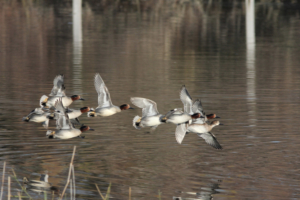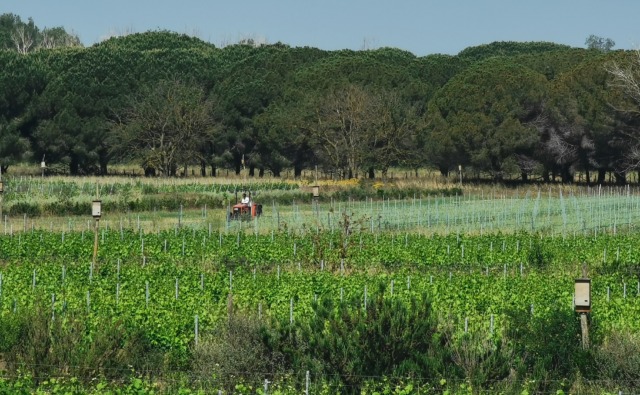This article, recently published in the journal Biodiversity and Conservation and based on the doctoral thesis of David Vallecillo, studies the influence of wetland management on the evolution of the distribution of Teal day-roosts in the Camargue (France). It highlights changes in the location of the main roosts over the last 35 years. The number of individuals at a given site between two wintering seasons decreases with salinity but increases with the size of the water area and the availability of potential feeding areas nearby. These findings underscore the significance of localized management strategies and their implications for the conservation of waterfowl in the face of climate change.
You can access to it on the Tour du Valat web documentary portal.

Abstract:
Explaining changes in waterfowl distribution and abundance is requested by wetland managers for a better understanding of their population dynamics and habitat use. The objective of this study was to assess the influence of interannual changes in wetland management, both through direct data and proxies, on the distribution dynamics of Teal day-roosts in the Camargue, a large wetland complex in southern France. We constructed a state-space model accounting for a conditional detection probability by aerial observers during duck counts, since changes in observers have a strong influence on variations in detection probability. First, we showed that the distribution of Teal day-roosts within the Camargue delta has changed over the last 35 years. Second, on a sub-sample of 18 years, we showed that annual changes in Teal abundance depended on salinity and open water area at the day-roost, and on the availability of potential feeding grounds surrounding the day-roost (available wetland area within 5 km). No association was detected between changes in Teal abundance and changes in the typology of wetland hydrology, or with changes in site protection status (i.e. hunted to protected). Our results reinforce the importance of considering management at the scale of functional units, by considering the complementarity of nocturnal feeding areas (mainly hunted areas) specifically managed for waterfowl, and diurnal roosts (mainly nature reserves, which have high conservation value for other animal and plant species). A good understanding of the factors affecting the localisation of waterfowl day-roosts is becoming more important in the context of climate change, which is likely to redistribute local birds with rising sea levels and increasing salinity in wetlands.
Bibliographical reference : Vallecillo, D., Guillemain, M., Bouchard, C. et al. Influence of changes in local environmental variables on the distribution and abundance dynamics of wintering Teal Anas crecca. Biodivers Conserv (2023). https://doi.org/10.1007/s10531-023-02713-9
